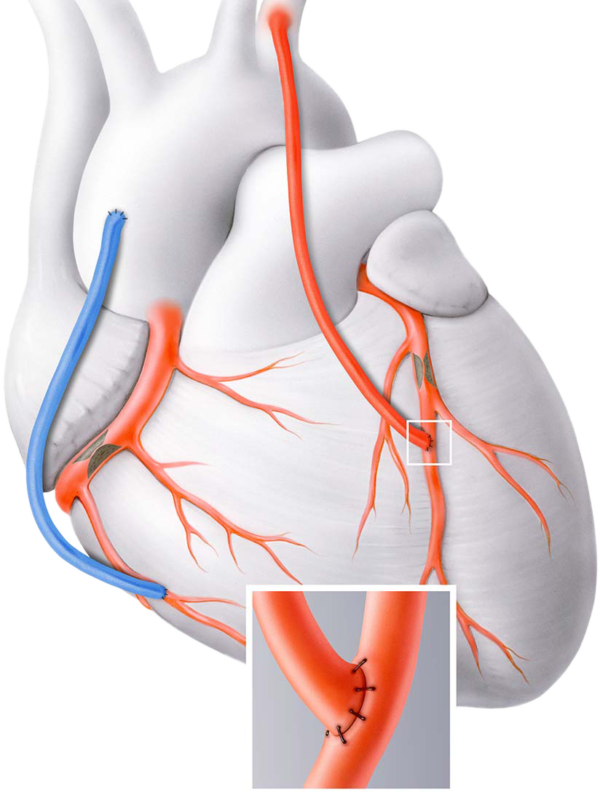
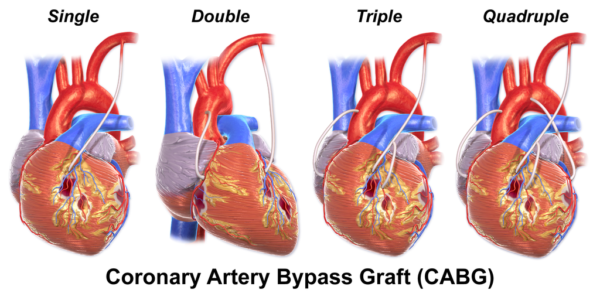
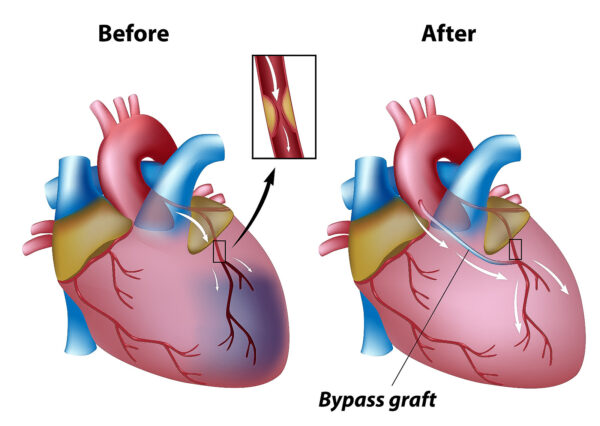
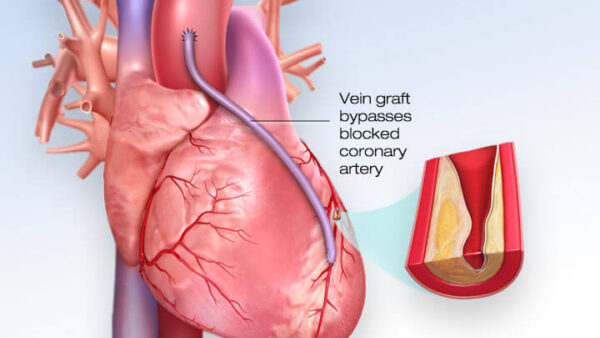
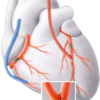
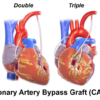
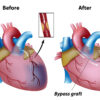
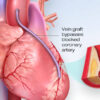
Free
Embark on a transformative journey with our exceptional range of medical treatments. As a leading medical tour operator, we offer a comprehensive selection of world-class treatments and procedures to address your unique healthcare needs. From advanced surgeries to cutting-edge therapies, our team of experienced professionals is dedicated to providing top-notch care and ensuring your comfort and satisfaction. Discover a new level of healthcare excellence with our tailored treatment options. Book now to start your journey towards a healthier and happier you.
Coronary Artery Bypass Grafting (CABG) is a surgical procedure used to improve blood flow to the heart by bypassing narrowed or blocked coronary arteries. It is also known as heart bypass surgery. Here are some key points about CABG:
Coronary Artery Bypass Grafting (CABG) surgery is suitable for individuals with coronary artery disease (CAD) who meet certain criteria. CABG surgery may be recommended for the following groups of patients:
Coronary Artery Bypass Grafting (CABG) may not be suitable for everyone with coronary artery disease (CAD) or certain medical conditions. The decision to undergo CABG is typically made on an individual basis, taking into consideration various factors. Here are some situations where CABG may not be recommended:
Minimal or no symptoms: If an individual has minimal or no symptoms of angina (chest pain) despite having significant blockages in the coronary arteries, CABG may not be necessary. In such cases, the risks and benefits of the procedure need to be carefully evaluated.
Advanced age or poor overall health: Advanced age or significant comorbidities may increase the risks associated with CABG. In some cases, alternative treatments or palliative care may be more appropriate.
Limited life expectancy: If an individual has a limited life expectancy due to advanced age, underlying medical conditions, or other factors, the potential benefits of CABG may not outweigh the risks or potential complications.
Unstable or high-risk condition: In certain situations where an individual’s condition is unstable or high-risk, such as severe heart failure or active infection, CABG may be deferred or alternative treatments may be considered.
Unsuitable anatomy: In some cases, the anatomy of the coronary arteries may not be suitable for CABG. For example, if the coronary arteries are too small or have diffuse disease, other treatment options like percutaneous coronary intervention (PCI) may be more appropriate.
Patient preference: Ultimately, the decision to undergo CABG should involve the patient’s preferences, values, and goals of care. If a patient does not wish to undergo surgical intervention, alternative treatments or conservative management may be considered.
Coronary Artery Bypass Grafting (CABG) surgery can be beneficial for certain individuals with coronary artery disease (CAD). Here are some advantages of CABG:
Improved blood flow: CABG creates new pathways for blood to flow around blocked or narrowed coronary arteries, improving blood flow to the heart muscle. This can relieve symptoms such as chest pain (angina) and improve overall heart function.
Symptom relief: Many patients experience significant improvement or complete relief of angina symptoms after CABG surgery. This can enhance their quality of life and allow them to engage in activities they were previously limited in due to chest pain.
Long-term benefits: Studies have shown that CABG surgery can provide long-term benefits for patients with coronary artery disease. It has been associated with improved survival rates and reduced risk of future cardiovascular events compared to medical therapy alone.
Durability: The grafts used in CABG, such as the internal mammary artery or saphenous vein, can provide durable and long-lasting results. These grafts can remain open and functional for many years, allowing for sustained improvement in blood flow to the heart.
Potential for complete revascularization: CABG allows for complete revascularization, meaning that multiple blocked or narrowed coronary arteries can be bypassed during the procedure. This comprehensive approach can restore blood flow to multiple areas of the heart, improving overall cardiac function.
Lower risk of repeat procedures: Compared to other treatments such as percutaneous coronary intervention (PCI), CABG has been associated with a lower risk of needing repeat procedures or interventions in the future.
While Coronary Artery Bypass Grafting (CABG) surgery is generally safe and effective, like any surgical procedure, it carries some risks and potential complications. It’s important to be aware of these potential complications, although they occur infrequently. Some of the possible complications of CABG surgery include:
Preoperative Evaluation: Before undergoing CABG surgery, a thorough preoperative evaluation is conducted. This includes a review of the patient’s medical history, physical examination, and various tests such as blood tests, electrocardiogram (ECG), echocardiogram, and coronary angiography. These evaluations help assess the severity of coronary artery disease, identify any associated conditions, and determine the suitability for surgery.
Medication Management: Prior to surgery, medications may be prescribed or adjusted to optimize the patient’s condition. This may include medications to control blood pressure, manage cholesterol levels, prevent blood clots, and stabilize heart function.
Preparation for Surgery: In the days leading up to the surgery, patients are given instructions on fasting, medication management, and other preoperative preparations. They may be advised to stop certain medications, refrain from eating or drinking for a specific period of time, and follow specific hygiene protocols.
Anesthesia: CABG surgery is performed under general anesthesia, which means the patient is unconscious and pain-free during the procedure. An anesthesiologist administers the anesthesia and monitors the patient’s vital signs throughout the surgery.
Surgical Procedure: During the surgery, the surgeon makes an incision in the chest to access the heart. The patient is connected to a heart-lung bypass machine, which takes over the function of the heart and lungs during the procedure. The surgeon then takes a healthy blood vessel, often from the chest or leg, and attaches it to the blocked coronary artery, bypassing the blockage and restoring blood flow to the heart muscle. The number of grafts performed depends on the extent of coronary artery disease.
Postoperative Care: After the surgery, the patient is transferred to the intensive care unit (ICU) for close monitoring. They are connected to various monitors to track vital signs, heart function, and oxygen levels. Pain management, wound care, and prevention of complications such as infection and blood clots are important aspects of postoperative care. Gradually, the patient is transitioned to a regular hospital room and then discharged with specific instructions for recovery, medication management, and follow-up appointments.
Aftercare following Coronary Artery Bypass Grafting (CABG) surgery is an essential part of the recovery process. Here are some key aspects of aftercare:
Hospital Stay: After CABG surgery, patients typically stay in the hospital for a few days. The length of the hospital stay may vary depending on individual factors and the specific hospital’s protocols. During this time, medical staff closely monitor the patient’s vital signs, heart function, and overall recovery.
Pain Management: Pain management is an important aspect of aftercare. Medications are prescribed to help manage pain and discomfort following surgery. It’s important for patients to communicate their pain levels to the healthcare team to ensure appropriate pain relief.
Wound Care: Proper care of the surgical incision site is crucial to prevent infection and promote healing. Patients are instructed on how to keep the incision clean and dry, and they may need to change dressings regularly. It’s important to follow the healthcare team’s instructions regarding wound care.
Physical Activity and Rehabilitation: Gradual resumption of physical activity is an important part of aftercare. Patients are encouraged to start with light activities, such as short walks, and gradually increase their activity level as advised by the healthcare team
Only logged in customers who have purchased this product may leave a review.
Coronary Artery Bypass Grafting (CABG) is a surgical procedure used to improve blood flow to the heart by bypassing narrowed or blocked coronary arteries. It is also known as heart bypass surgery. Here are some key points about CABG:
Coronary Artery Bypass Grafting (CABG) surgery is suitable for individuals with coronary artery disease (CAD) who meet certain criteria. CABG surgery may be recommended for the following groups of patients:
Coronary Artery Bypass Grafting (CABG) may not be suitable for everyone with coronary artery disease (CAD) or certain medical conditions. The decision to undergo CABG is typically made on an individual basis, taking into consideration various factors. Here are some situations where CABG may not be recommended:
Minimal or no symptoms: If an individual has minimal or no symptoms of angina (chest pain) despite having significant blockages in the coronary arteries, CABG may not be necessary. In such cases, the risks and benefits of the procedure need to be carefully evaluated.
Advanced age or poor overall health: Advanced age or significant comorbidities may increase the risks associated with CABG. In some cases, alternative treatments or palliative care may be more appropriate.
Limited life expectancy: If an individual has a limited life expectancy due to advanced age, underlying medical conditions, or other factors, the potential benefits of CABG may not outweigh the risks or potential complications.
Unstable or high-risk condition: In certain situations where an individual’s condition is unstable or high-risk, such as severe heart failure or active infection, CABG may be deferred or alternative treatments may be considered.
Unsuitable anatomy: In some cases, the anatomy of the coronary arteries may not be suitable for CABG. For example, if the coronary arteries are too small or have diffuse disease, other treatment options like percutaneous coronary intervention (PCI) may be more appropriate.
Patient preference: Ultimately, the decision to undergo CABG should involve the patient’s preferences, values, and goals of care. If a patient does not wish to undergo surgical intervention, alternative treatments or conservative management may be considered.
Coronary Artery Bypass Grafting (CABG) surgery can be beneficial for certain individuals with coronary artery disease (CAD). Here are some advantages of CABG:
Improved blood flow: CABG creates new pathways for blood to flow around blocked or narrowed coronary arteries, improving blood flow to the heart muscle. This can relieve symptoms such as chest pain (angina) and improve overall heart function.
Symptom relief: Many patients experience significant improvement or complete relief of angina symptoms after CABG surgery. This can enhance their quality of life and allow them to engage in activities they were previously limited in due to chest pain.
Long-term benefits: Studies have shown that CABG surgery can provide long-term benefits for patients with coronary artery disease. It has been associated with improved survival rates and reduced risk of future cardiovascular events compared to medical therapy alone.
Durability: The grafts used in CABG, such as the internal mammary artery or saphenous vein, can provide durable and long-lasting results. These grafts can remain open and functional for many years, allowing for sustained improvement in blood flow to the heart.
Potential for complete revascularization: CABG allows for complete revascularization, meaning that multiple blocked or narrowed coronary arteries can be bypassed during the procedure. This comprehensive approach can restore blood flow to multiple areas of the heart, improving overall cardiac function.
Lower risk of repeat procedures: Compared to other treatments such as percutaneous coronary intervention (PCI), CABG has been associated with a lower risk of needing repeat procedures or interventions in the future.
While Coronary Artery Bypass Grafting (CABG) surgery is generally safe and effective, like any surgical procedure, it carries some risks and potential complications. It’s important to be aware of these potential complications, although they occur infrequently. Some of the possible complications of CABG surgery include:
Preoperative Evaluation: Before undergoing CABG surgery, a thorough preoperative evaluation is conducted. This includes a review of the patient’s medical history, physical examination, and various tests such as blood tests, electrocardiogram (ECG), echocardiogram, and coronary angiography. These evaluations help assess the severity of coronary artery disease, identify any associated conditions, and determine the suitability for surgery.
Medication Management: Prior to surgery, medications may be prescribed or adjusted to optimize the patient’s condition. This may include medications to control blood pressure, manage cholesterol levels, prevent blood clots, and stabilize heart function.
Preparation for Surgery: In the days leading up to the surgery, patients are given instructions on fasting, medication management, and other preoperative preparations. They may be advised to stop certain medications, refrain from eating or drinking for a specific period of time, and follow specific hygiene protocols.
Anesthesia: CABG surgery is performed under general anesthesia, which means the patient is unconscious and pain-free during the procedure. An anesthesiologist administers the anesthesia and monitors the patient’s vital signs throughout the surgery.
Surgical Procedure: During the surgery, the surgeon makes an incision in the chest to access the heart. The patient is connected to a heart-lung bypass machine, which takes over the function of the heart and lungs during the procedure. The surgeon then takes a healthy blood vessel, often from the chest or leg, and attaches it to the blocked coronary artery, bypassing the blockage and restoring blood flow to the heart muscle. The number of grafts performed depends on the extent of coronary artery disease.
Postoperative Care: After the surgery, the patient is transferred to the intensive care unit (ICU) for close monitoring. They are connected to various monitors to track vital signs, heart function, and oxygen levels. Pain management, wound care, and prevention of complications such as infection and blood clots are important aspects of postoperative care. Gradually, the patient is transitioned to a regular hospital room and then discharged with specific instructions for recovery, medication management, and follow-up appointments.
Aftercare following Coronary Artery Bypass Grafting (CABG) surgery is an essential part of the recovery process. Here are some key aspects of aftercare:
Hospital Stay: After CABG surgery, patients typically stay in the hospital for a few days. The length of the hospital stay may vary depending on individual factors and the specific hospital’s protocols. During this time, medical staff closely monitor the patient’s vital signs, heart function, and overall recovery.
Pain Management: Pain management is an important aspect of aftercare. Medications are prescribed to help manage pain and discomfort following surgery. It’s important for patients to communicate their pain levels to the healthcare team to ensure appropriate pain relief.
Wound Care: Proper care of the surgical incision site is crucial to prevent infection and promote healing. Patients are instructed on how to keep the incision clean and dry, and they may need to change dressings regularly. It’s important to follow the healthcare team’s instructions regarding wound care.
Physical Activity and Rehabilitation: Gradual resumption of physical activity is an important part of aftercare. Patients are encouraged to start with light activities, such as short walks, and gradually increase their activity level as advised by the healthcare team
There are no reviews yet.
Only logged in customers who have purchased this product may leave a review.
Choosing the right hospital and physician are important factors to consider that significantly influence a patient’s treatment. The preferred choice for many patients is choosing private care.
Choosing the right hospital and physician are important factors to consider that significantly influence a patient’s treatment.
Reviews
There are no reviews yet.